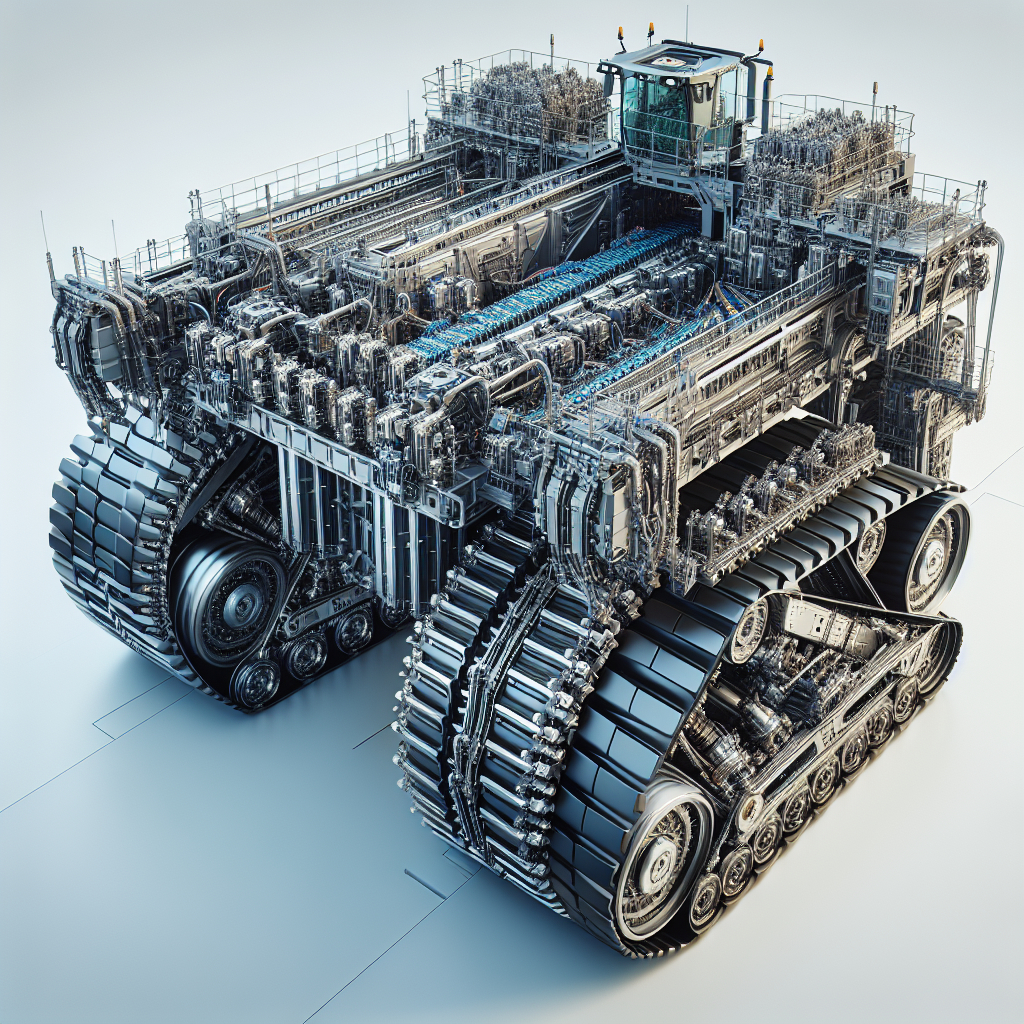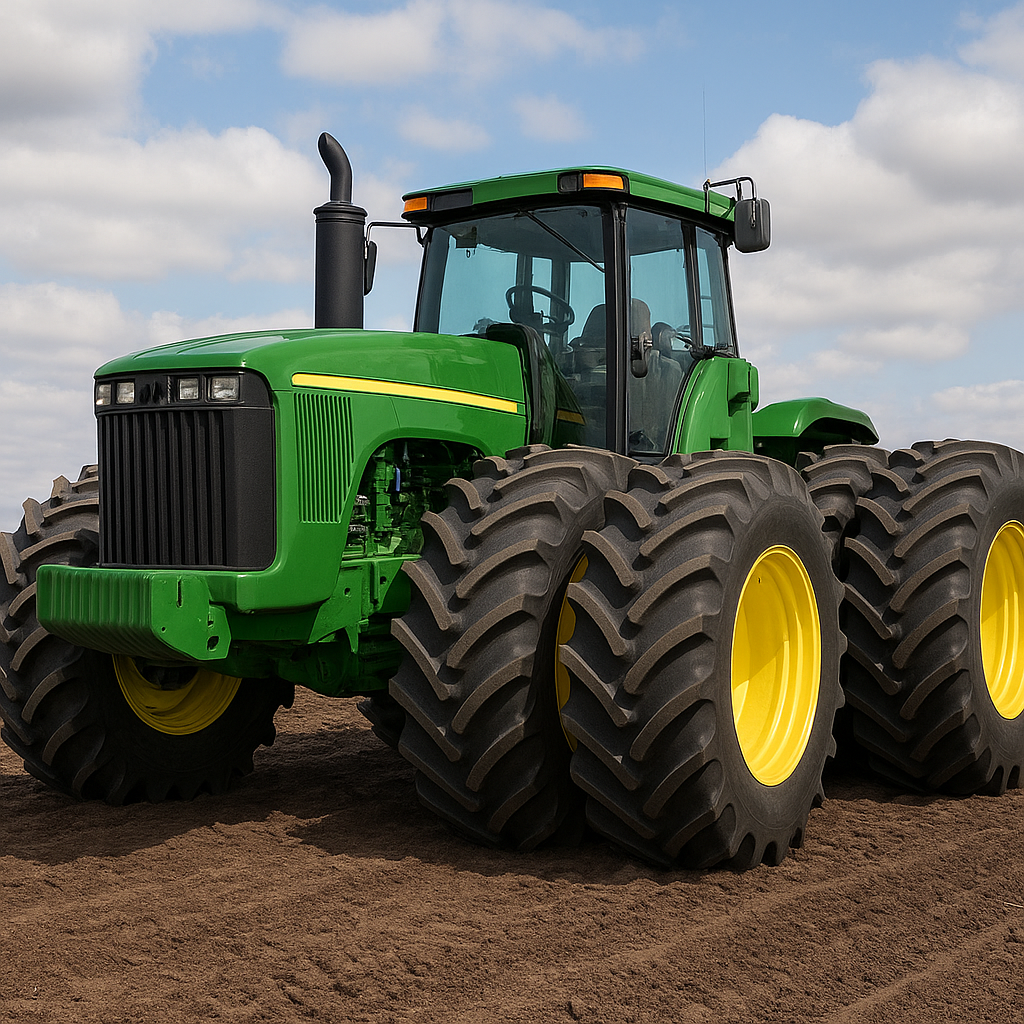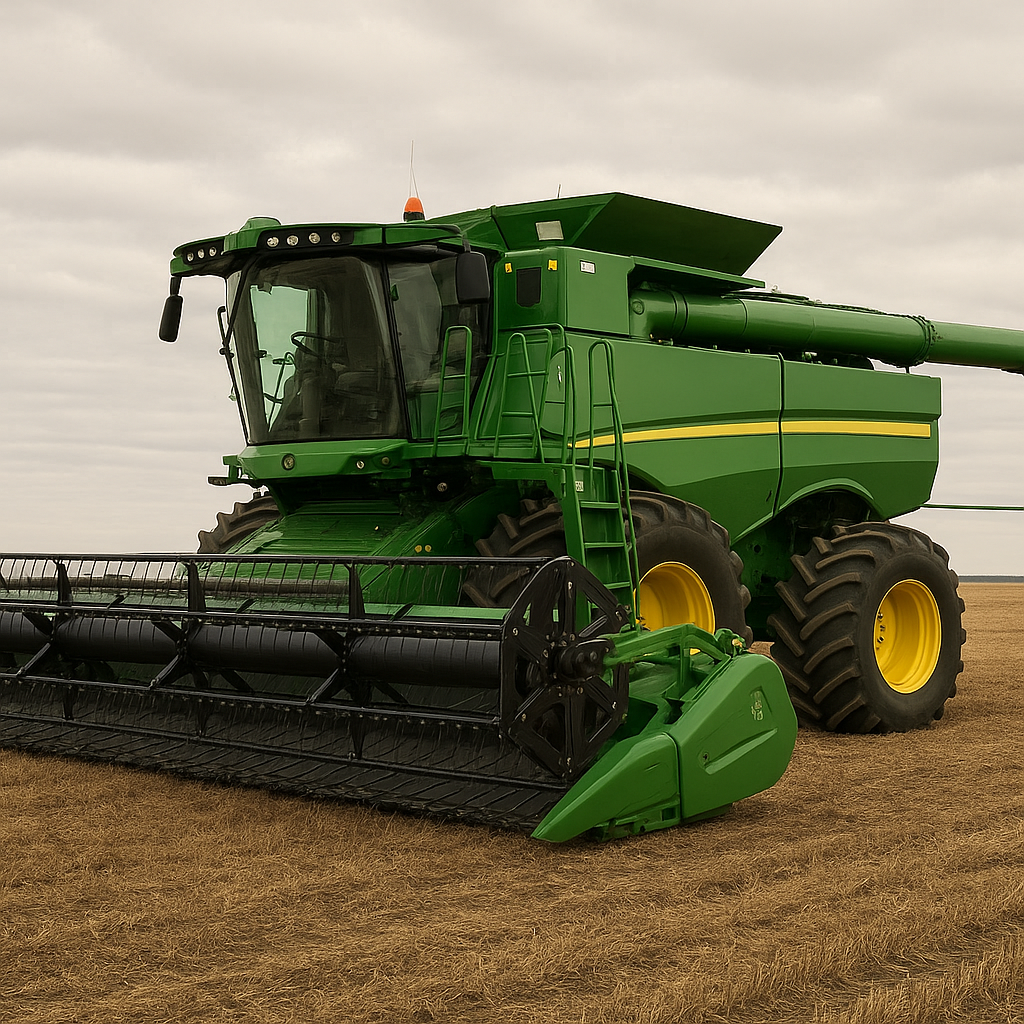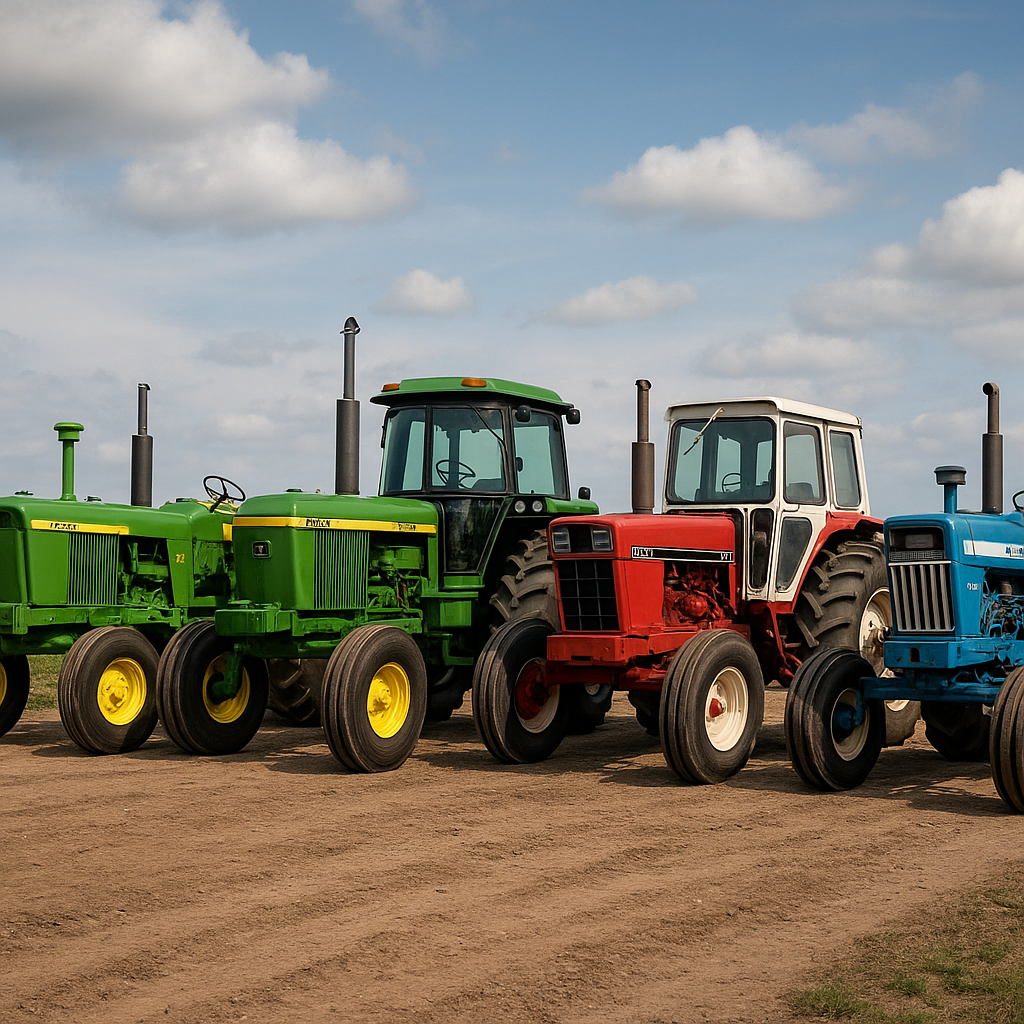In the realm of modern agriculture, the development of the biggest tractors has revolutionized farming practices, enabling farmers to manage larger fields with greater efficiency and precision. These colossal machines are not just about size; they incorporate advanced technologies that enhance their performance, durability, and versatility. This article delves into the world of the biggest tractors, exploring their features, innovations, and the impact they have on contemporary farming.
Technological Advancements in Tractor Design
The evolution of tractor design has been marked by significant technological advancements that have transformed these machines into powerful and efficient tools for modern agriculture. One of the most notable innovations is the integration of load-balancing and weight distribution technology. These advancements ensure that the massive weight of the tractor is evenly distributed, reducing soil compaction and improving traction.
Load-Balancing Systems
Load-balancing systems are crucial for maintaining the stability and efficiency of large tractors. These systems use sensors and hydraulic mechanisms to monitor and adjust the distribution of weight across the tractor’s axles. By doing so, they prevent uneven wear and tear on the tires and reduce the risk of tipping over, especially when operating on uneven terrain.
One of the key components of load-balancing systems is the use of advanced sensors that continuously monitor the tractor’s load. These sensors provide real-time data to the tractor’s onboard computer, which then makes adjustments to the hydraulic system to ensure optimal weight distribution. This technology not only enhances the tractor’s stability but also improves fuel efficiency by reducing the amount of energy required to move the machine.
Weight Distribution Technology
Weight distribution technology plays a vital role in maximizing the performance of the biggest tractors. This technology involves the strategic placement of weights and the use of advanced materials to ensure that the tractor’s weight is evenly distributed. By doing so, it minimizes soil compaction, which is a common issue with heavy machinery.
One of the most innovative approaches to weight distribution is the use of ballast systems. These systems allow farmers to add or remove weight from the tractor as needed, depending on the task at hand. For example, when plowing a field, additional weight can be added to the rear of the tractor to improve traction. Conversely, when transporting goods, weight can be shifted to the front to enhance stability.
Impact on Modern Farming Practices
The introduction of the biggest tractors equipped with advanced load-balancing and weight distribution technology has had a profound impact on modern farming practices. These machines have enabled farmers to increase their productivity, reduce operational costs, and minimize environmental impact.
Increased Productivity
One of the most significant benefits of using the biggest tractors is the increase in productivity. These machines are capable of covering larger areas in a shorter amount of time, allowing farmers to complete tasks more efficiently. The advanced technology integrated into these tractors also ensures that they can operate in various conditions, from dry fields to muddy terrains, without compromising performance.
Moreover, the precision of load-balancing and weight distribution technology allows for more accurate planting, fertilizing, and harvesting. This precision leads to better crop yields and higher-quality produce, ultimately benefiting the farmers’ bottom line.
Reduced Operational Costs
The efficiency of the biggest tractors translates to reduced operational costs for farmers. The advanced load-balancing and weight distribution systems minimize wear and tear on the tractor’s components, leading to lower maintenance costs. Additionally, the improved fuel efficiency of these machines reduces the overall fuel consumption, further decreasing operational expenses.
Furthermore, the ability to complete tasks more quickly and accurately means that farmers can allocate their resources more effectively. This efficiency allows them to focus on other aspects of their operations, such as crop management and market strategies, ultimately leading to increased profitability.
Minimized Environmental Impact
The environmental impact of farming is a growing concern, and the biggest tractors equipped with advanced technology play a crucial role in addressing this issue. The load-balancing and weight distribution systems reduce soil compaction, which is essential for maintaining soil health and preventing erosion. Healthy soil is vital for sustainable farming, as it supports plant growth and reduces the need for chemical fertilizers.
Additionally, the improved fuel efficiency of these tractors results in lower greenhouse gas emissions. By reducing their carbon footprint, farmers can contribute to environmental conservation efforts and promote sustainable agricultural practices.
Case Studies: Leading Models of the Biggest Tractors
To better understand the impact of these technological advancements, let’s explore some of the leading models of the biggest tractors currently available on the market. These case studies highlight the features and benefits of these machines, showcasing their capabilities and contributions to modern farming.
John Deere 9RX Series
The John Deere 9RX Series is renowned for its power and versatility. These tractors are equipped with advanced load-balancing and weight distribution systems that ensure optimal performance in various conditions. The 9RX Series features a robust frame and powerful engine, making it ideal for heavy-duty tasks such as plowing, planting, and harvesting.
One of the standout features of the 9RX Series is its CommandView™ III cab, which provides operators with a comfortable and ergonomic workspace. The cab is equipped with advanced controls and displays, allowing operators to monitor and adjust the tractor’s performance in real-time. This level of control enhances productivity and ensures that tasks are completed with precision.
Case IH Steiger Quadtrac
The Case IH Steiger Quadtrac is another leading model in the realm of the biggest tractors. This machine is designed for maximum traction and stability, thanks to its unique four-track system. The Quadtrac’s load-balancing and weight distribution technology ensures that the weight is evenly distributed across all four tracks, reducing soil compaction and improving traction.
The Steiger Quadtrac is also equipped with the AFS Connect™ system, which provides operators with real-time data on the tractor’s performance. This system allows for remote monitoring and adjustments, ensuring that the tractor operates at peak efficiency. The Quadtrac’s advanced technology and robust design make it a popular choice among farmers looking for a reliable and powerful machine.
New Holland T9 Series
The New Holland T9 Series is known for its impressive power and advanced technology. These tractors are equipped with the IntelliView™ IV display, which provides operators with a comprehensive view of the tractor’s performance. The T9 Series also features advanced load-balancing and weight distribution systems, ensuring optimal performance in various conditions.
One of the key features of the T9 Series is its ECOBlue™ HI-eSCR engine, which meets stringent emissions standards while delivering exceptional power and fuel efficiency. This engine, combined with the tractor’s advanced technology, makes the T9 Series a top choice for farmers looking to maximize productivity and minimize environmental impact.
Future Trends in Tractor Technology
The future of tractor technology is promising, with ongoing advancements aimed at further enhancing the performance, efficiency, and sustainability of these machines. As the demand for food production continues to rise, the development of innovative technologies will play a crucial role in meeting this demand while minimizing the environmental impact.
Autonomous Tractors
One of the most exciting trends in tractor technology is the development of autonomous tractors. These machines are equipped with advanced sensors, GPS systems, and artificial intelligence, allowing them to operate without human intervention. Autonomous tractors can perform tasks such as planting, fertilizing, and harvesting with precision, reducing the need for manual labor and increasing efficiency.
The integration of autonomous technology also allows for more accurate data collection and analysis. This data can be used to optimize farming practices, improve crop yields, and reduce resource consumption. As autonomous tractors become more advanced, they have the potential to revolutionize the agricultural industry.
Electric and Hybrid Tractors
Another significant trend is the development of electric and hybrid tractors. These machines are designed to reduce greenhouse gas emissions and minimize the environmental impact of farming. Electric tractors are powered by batteries, while hybrid tractors combine traditional internal combustion engines with electric motors.
The adoption of electric and hybrid tractors is driven by the need for sustainable farming practices. These machines offer several benefits, including lower operating costs, reduced noise pollution, and decreased reliance on fossil fuels. As battery technology continues to improve, the range and performance of electric tractors are expected to increase, making them a viable option for a wide range of farming tasks.
Advanced Data Analytics
The use of advanced data analytics is becoming increasingly important in modern farming. Tractors equipped with sensors and connectivity features can collect vast amounts of data on soil conditions, crop health, and machine performance. This data can be analyzed to make informed decisions, optimize farming practices, and improve overall efficiency.
Advanced data analytics also enable predictive maintenance, allowing farmers to identify potential issues before they become major problems. By addressing maintenance needs proactively, farmers can reduce downtime and extend the lifespan of their equipment. The integration of data analytics into tractor technology is set to transform the agricultural industry, making it more data-driven and efficient.
In conclusion, the biggest tractors equipped with advanced load-balancing and weight distribution technology have revolutionized modern farming practices. These machines offer numerous benefits, including increased productivity, reduced operational costs, and minimized environmental impact. As technology continues to advance, the future of tractor design looks promising, with innovations such as autonomous tractors, electric and hybrid models, and advanced data analytics set to further enhance the efficiency and sustainability of agriculture.









